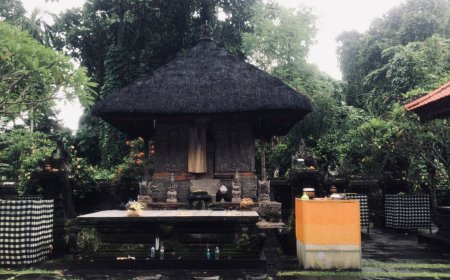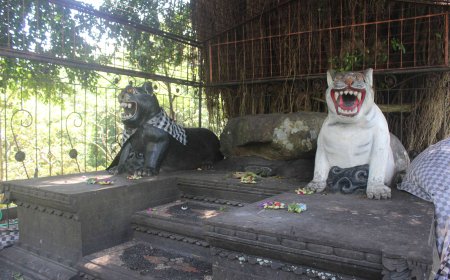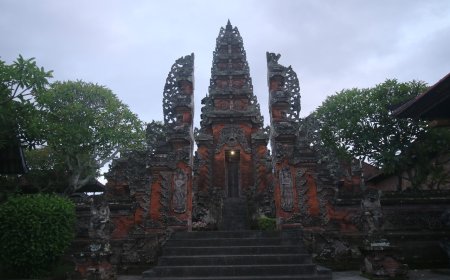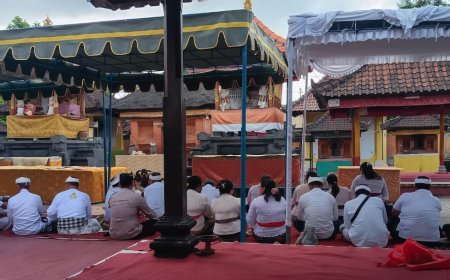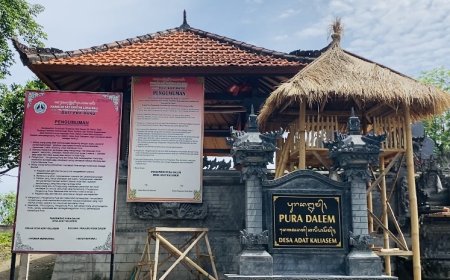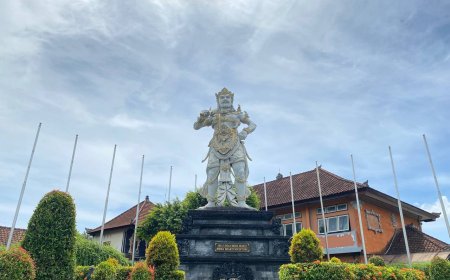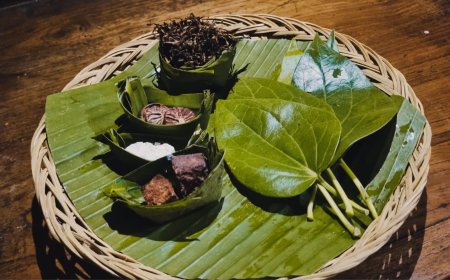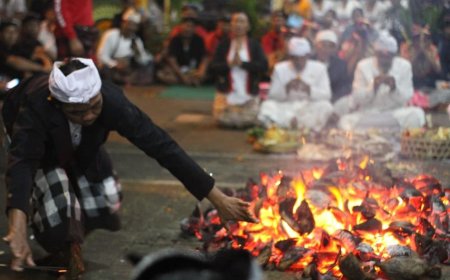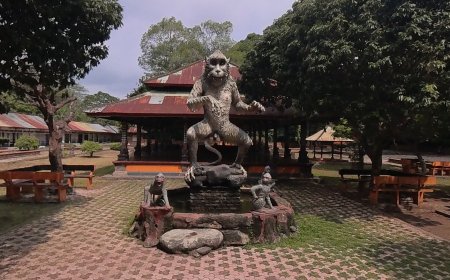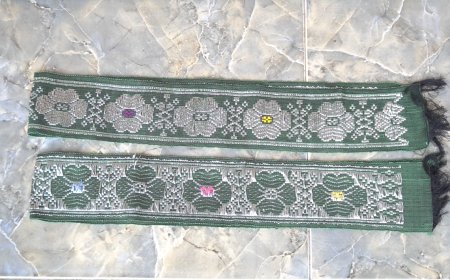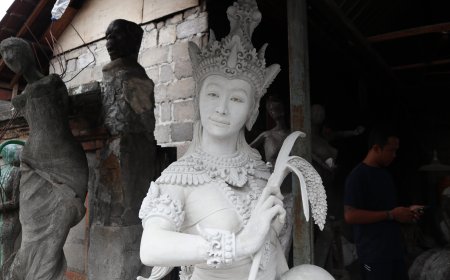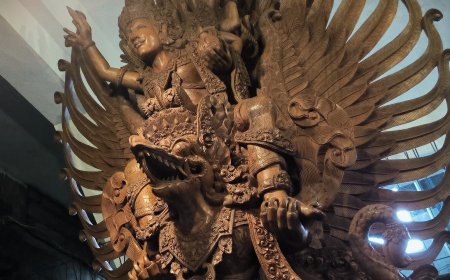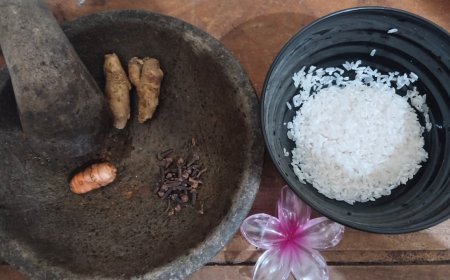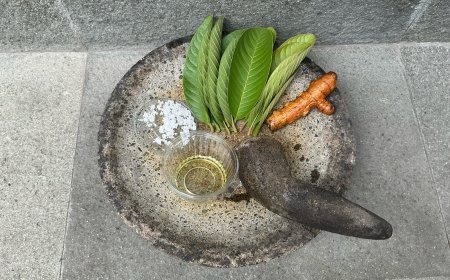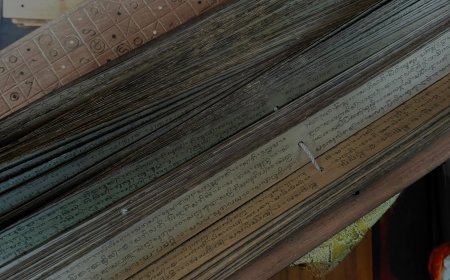Not an Ornament: Ulap-ulap as a Marker of Buildings that Have Been Consecrated (Pasupati)
Ulap-ulap is a piece of white cloth with sacred rerajahan that is installed after the pemelaspasan ceremony as a marker that a building has been consecrated (pasupati). Ulap-ulap is not an ornament, but a symbol of spiritual protection and a form of Balinese local wisdom. Various forms of ulap-ulap—such as aksara modre, symbols of Dewa Nawa Sanga, and mythological figures—are placed according to the level of sanctity of the building. Amid modernization, the tradition of ulap-ulap continues to convey aesthetic, religious, and character-educational values that remain relevant for today’s generation.
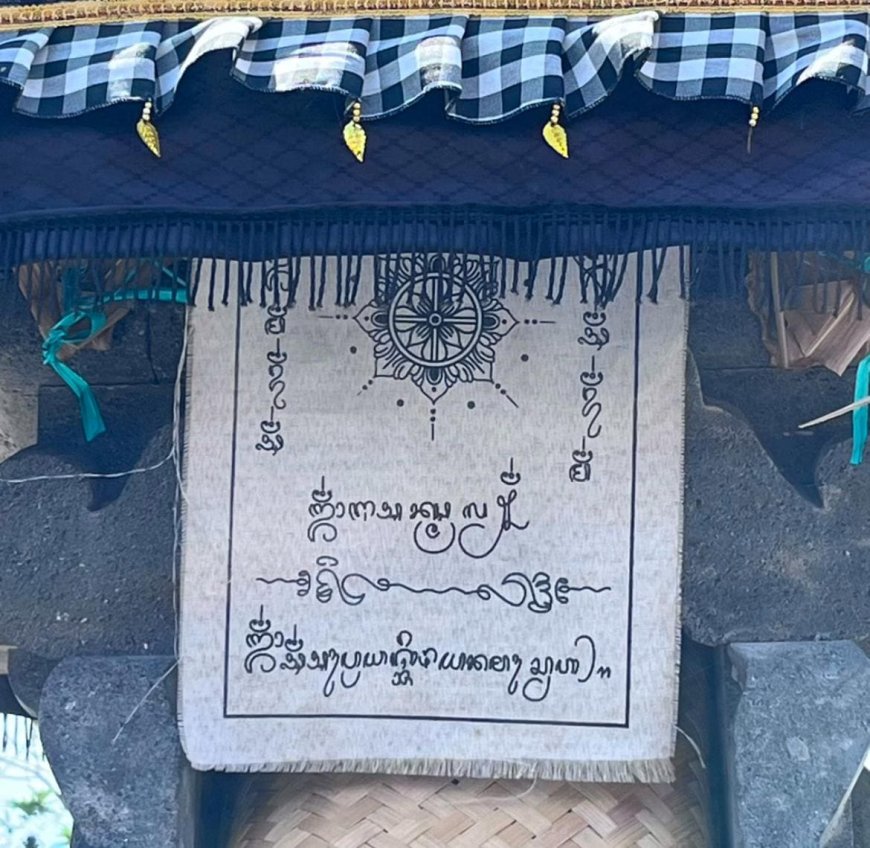
Ulap-ulap is a piece of white cloth inscribed with sacred characters, hung at the doorway of houses or temples as a sacred sign that the building has been consecrated through the pemelaspasan ritual. The main function of ulap-ulap is as a “subtle barrier” that maintains harmony between the sekala (seen) and niskala (unseen) worlds. It also serves as a symbol of purification, signifying that the space is ready to be used for religious or daily activities in a sacred manner. However, over time, many young generations perceive it as decoration, without understanding the spiritual meaning behind it. Therefore, it is important to reaffirm ulap-ulap as part of Bali’s cultural and spiritual identity that deserves to be preserved.
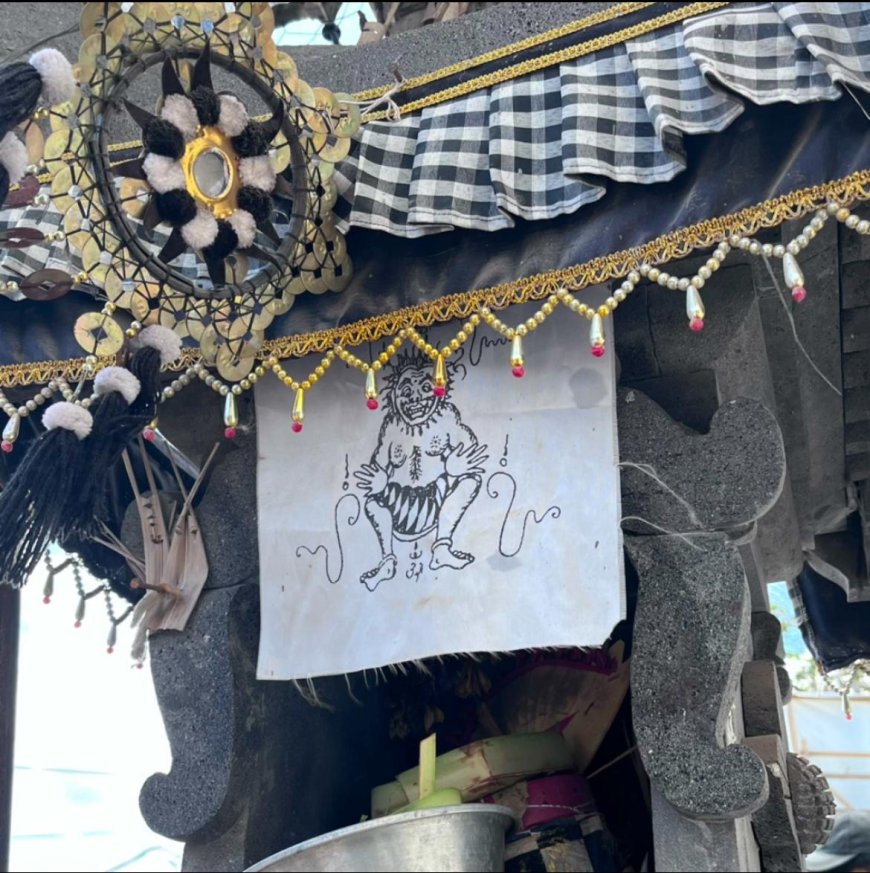
Ulap-ulap Bhuta Kala (Source: Personal Collection)
The sacred drawings (rerajahan) on ulap-ulap embody symbols that represent the power of Dewa Nawa Sanga, guardians of the nine directions of the universe. The lines, characters, and visual forms within them are spiritual forces that preserve the balance between sekala (tangible) and niskala (intangible). Some rerajahan even include specific mantras that are believed to neutralize negative energy and protect the household. Ulap-ulap reminds people to live harmoniously with nature and Sang Hyang Widhi.
In addition, the religious meaning of ulap-ulap symbolism aligns with the philosophy of Satyam (truth), Sivam (purity), and Sundaram (beauty), which form the basis of aesthetics and morality in Balinese Hindu tradition. This makes ulap-ulap not merely a ritual object but also a medium of moral education for the community. By hanging ulap-ulap, Balinese people believe the building is surrounded by divine power that protects it from negative disturbances.
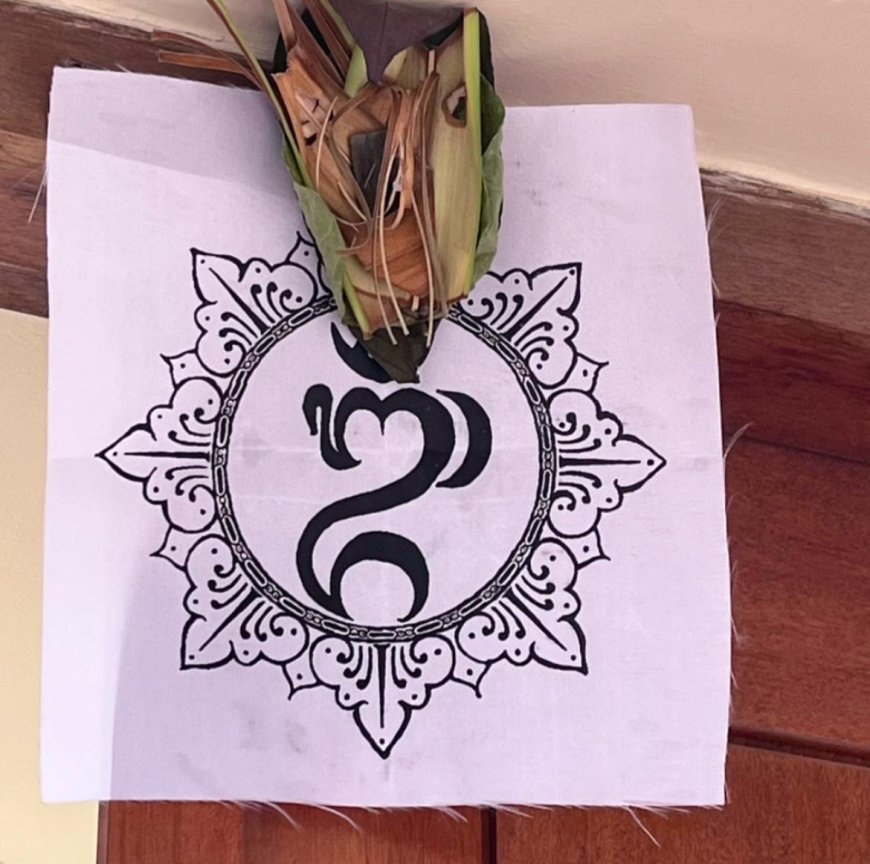
Ulap-ulap Om Symbol (Source: Personal Collection)
Ulap-ulap cannot be placed arbitrarily but must follow strict customary rules and rituals. It is installed only after the pemelaspasan or mlaspas ceremony is held. A pemangku or pinandita leads the sacred prayers and seeks blessings from Sang Hyang Widhi so that the newly constructed building receives its spiritual essence. The ritual usually involves offerings, holy water, and incense as a form of spiritual cleansing. Afterward, the ulap-ulap is hung at the doorway, pavilion, or certain parts of the building. This act signifies that the building is spiritually legitimate and believed to possess religious power and protection from negative forces.
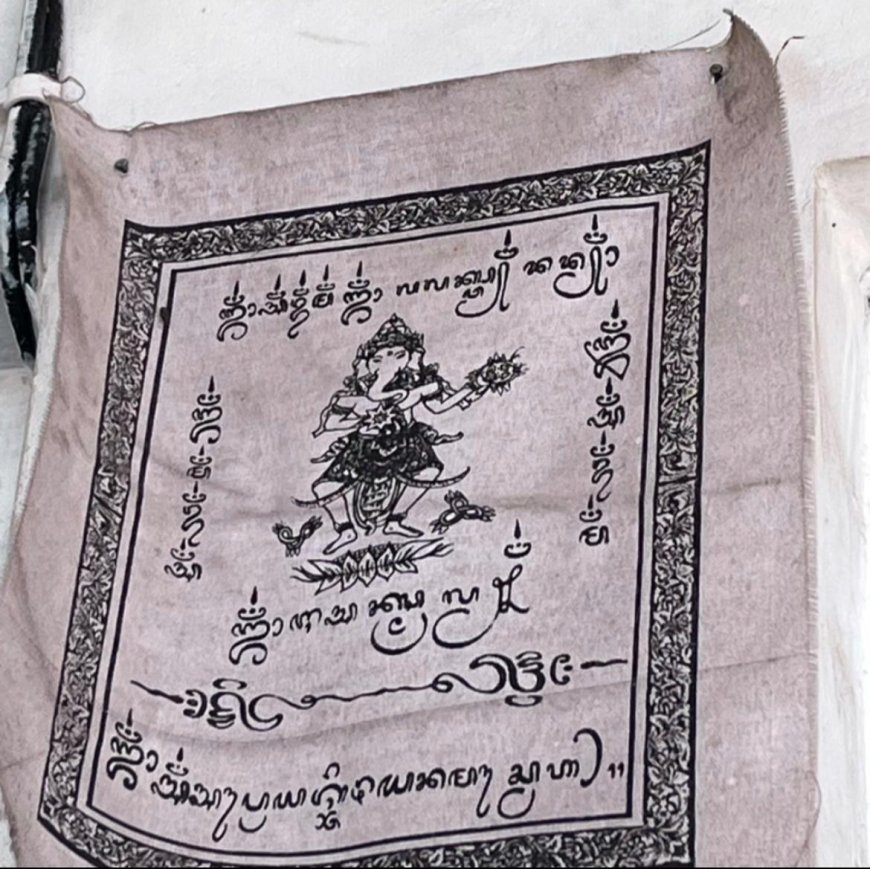
Ulap-ulap Ganesha (Source: Personal Collection)
Ulap-ulap comes in various forms of rerajahan, adjusted to its function and placement. For instance, there are ulap-ulap depicting Lord Ganesha surrounded by sacred characters, usually placed in temples or shrines, as Ganesha is regarded as a protector and giver of wisdom. There are also ulap-ulap featuring the figure of Bhuta Kala with a fierce face, used to ward off misfortune and negative energy, commonly found in family shrines (pelinggih). In some communities, ulap-ulap is regularly replaced during major ceremonies such as Galungan or Kuningan to refresh its sacred power. Meanwhile, ulap-ulap bearing the simple sacred symbol Om (ॐ) are often installed at house entrances, marking that the building has undergone pasupati and serving as a prayer for the inhabitant’s safety. These different forms of rerajahan show that ulap-ulap is not just plain white cloth with sacred symbols, but a spiritual medium tailored to the context of the building and the ritual’s purpose.
Beyond its spiritual function, ulap-ulap also carries social significance. The process of making and installing ulap-ulap often involves family members or villagers working together, strengthening social bonds and promoting cooperation. This communal activity becomes an opportunity to pass down cultural knowledge to younger generations. In today’s modern era, such traditions can be transformed into cultural education programs, ensuring that the values behind ulap-ulap remain relevant and appreciated. In this way, ulap-ulap preserves not only the sanctity of buildings but also the spirit of unity within Balinese society.
To understand ulap-ulap is to see it not as white cloth with sacred drawings, but as a heritage imbued with spiritual values. The younger generation is expected to view ulap-ulap as part of their identity and local wisdom that must be preserved. Awareness can be nurtured through education, cultural workshops, and participation in village ceremonies. Therefore, let us collectively safeguard this tradition—not only by hanging ulap-ulap on buildings but also by enlivening the meanings and philosophies within it—so that Bali’s cultural identity continues to endure across generations.
